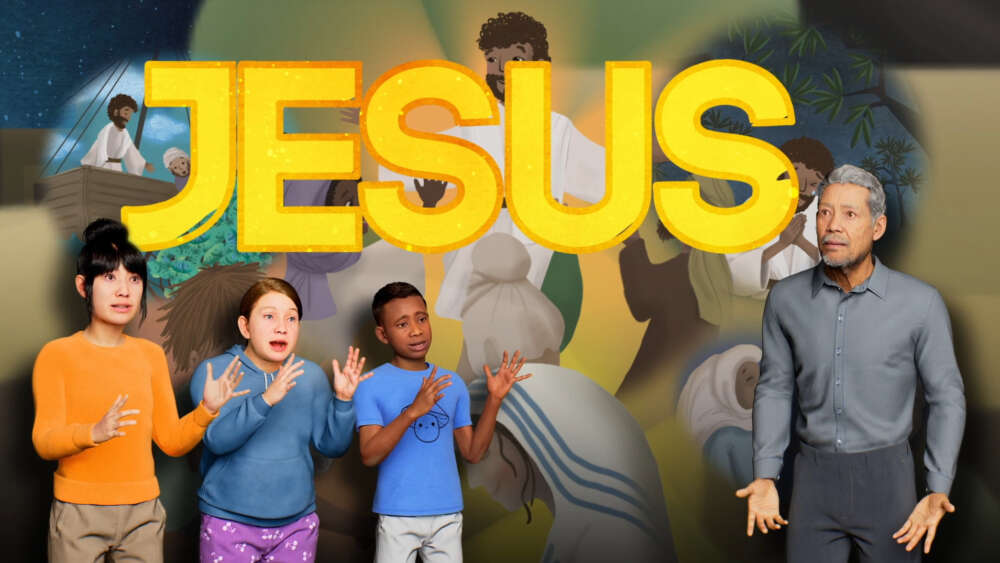Christmas video a first for Deaf community
A new Christmas video from Bible Society Australia (BSA) represents ten years of work using life-like 3D animated motion capture to bring the gospel message to Deaf people in Auslan, the Australian sign language.
The Auslan video Who, What, Why, How Christmas is based on a Christmas book BSA produced in 2019 but uses avatars (animated characters) created by motion capture technology to tell children the story of the Saviour’s birth.
It’s the first of BSA’s planned series of Bible engagement resources for Australia’s Deaf community.
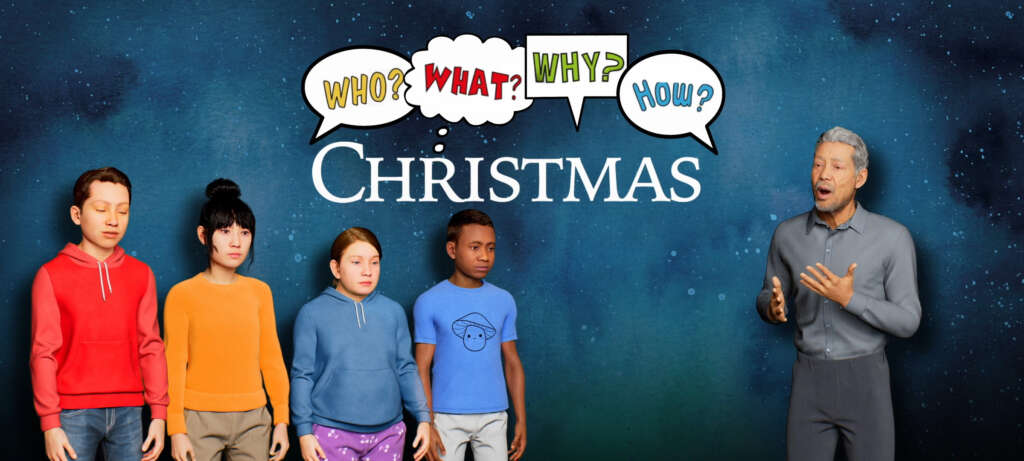 It’s also the first time this software has been used to release a product in Australia and represents the first fruits of a decade’s work by Saul and Rebecca Thurrowgood.
It’s also the first time this software has been used to release a product in Australia and represents the first fruits of a decade’s work by Saul and Rebecca Thurrowgood.
“My husband and I joined Wycliffe Bible translators about ten years ago. And he started working on a project to figure out a way to convert signing into 3D animated motion capture,” explains Rebecca.
Being a child of Deaf parents who struggled to understand the gospel until they saw it explained in Auslan, Rebecca was keen to see more Auslan Bible work happen but knew that one of the difficulties was finding the right people to be on the screen.
Less than 2 per cent of Deaf people around the world are Christian because they cannot access Scripture in a language they understand – a sign language. There are more than 25 sign languages with portions of Scripture available on video, but there are significant barriers to videoing real people in translating the remaining sign languages.
“Taking away that human face and having a generic character they can relate to means they can go, ‘Oh, this is what God is saying through Scripture.’’ – Rebecca Thurrowgood
Rebecca wants Deaf people to be aware that the gospel is for them and it’s in their language. Still, there is a need across the globe for different sign languages not to show the face of the person who’s signing, either to protect the person from persecution or the translation.
“Some Deaf people will not trust a translation if the signer is Catholic, for example. The translation has gone under all the rigorous checks you expect of a proper Bible translation. Yet, the face of the translation aligns with a particular denomination or may have been a Christian and fallen away and all these things can impede how people receive the word of God,” she says.
“Taking away that human face and having a generic character they can relate to means they can go, ‘Oh, this is what God is saying through Scripture.’ So this kind of software eliminates some of those barriers, which is great.”
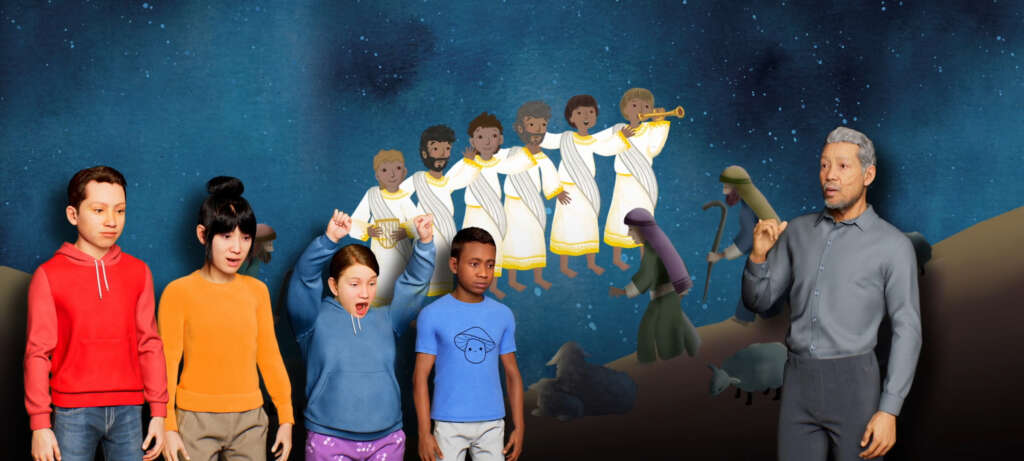 Saul and Rebecca aim to solve these issues with their innovative software, called Chameleon, which trains the computer’s neural networks to recognise different locations, including the body, the hand and five different neural networks in the face. Hundreds of thousands of images are fed into the computer to recognise various shapes. Once it can remember specific movements, the avatar can be asked to perform many sign movements.
Saul and Rebecca aim to solve these issues with their innovative software, called Chameleon, which trains the computer’s neural networks to recognise different locations, including the body, the hand and five different neural networks in the face. Hundreds of thousands of images are fed into the computer to recognise various shapes. Once it can remember specific movements, the avatar can be asked to perform many sign movements.
For the Christmas video, BSA videographer Bryce McLellan processed the recordings of the avatars, which were on a green screen, and added all the backgrounds, shadows, and transitions and the audio to the video.
The video is being distributed through churches and BSA networks, such as its Auslan committee, who are mainly Deaf people in churches.
“This is the first one in Australia for our Bible work, so we’re moving from Bible translation into Bible engagement resources in AUSLAN. We’re going to try a couple of these out to reach all demographics,” says Chris Melville, BSA’s Head of Mission.
“We’re now looking to produce the Easter version of that story. These are children’s/family stories so we’ll look to do adult stuff later next year.”
Rebecca hopes materials such as these will fill a gap in efforts to engage Deaf youth and children, who rarely access Sunday school because of a lack of AUSLAN interpreters.
“I’m hoping that the new medium of life-like 3D animation using motion capture will have a curiosity/novelty aspect, too and catch the attention of those who might not normally be interested. There is really nothing like this in the secular world, either. Mostly I’m hoping that Deaf and hearing people will be able to use this to reach out to people with the gospel – to have tools to reach out to Deaf family members and friends.”
She also hopes the video will generate excitement among Deaf adults to become more interested in Auslan translation and value it more.
“I find that a Deaf church tends to be an aging church, as a lot of denominations are, with not many young people.”
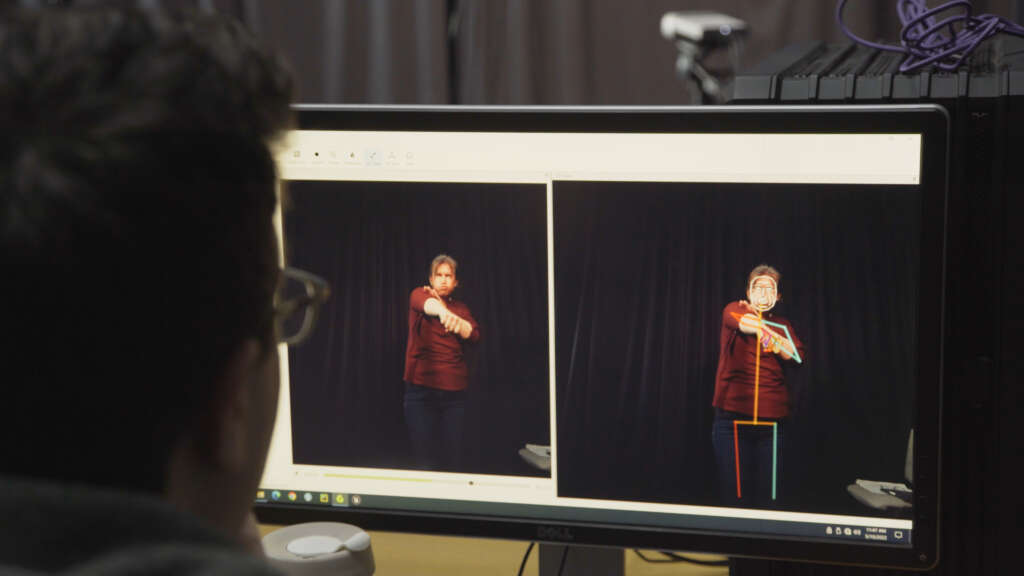
Behind the scenes in the making of the video
Part of the problem is that most Deaf people have hearing children and most Deaf people have hearing parents.
“Only about 10 per cent are Deaf people with Deaf parents. So Deaf children don’t go to Deaf churches – they usually go with their hearing parents, if at all, and they very rarely access children’s church because who’s going to interpret Sunday School? So how do we provide the gospel in Auslan to children.”
“I’d like to see a new generation of Deaf people following Christ.” – Rebecca Thurrowgood
She also hopes Deaf children with non-Christian parents may stumble across the video on the internet and thereby gain access to the gospel.
“My biggest heart is just to see a reawakening in the Deaf churches and a new passion for seeing new people. I think they’re tired, and they’re getting old. I’d like to see a new generation of Deaf people following Christ, that they’ll be reached before this previous generation dies off, so we’re not starting from square one again to reach these people.”
Rebecca says many Deaf people struggle with reading simply because reading is so heavily phonetic, particularly in English.
“I did a master’s thesis in the Deaf churches of Australia to see how Deaf people respond to Christianity. And it was fascinating in all the interviews I did, how much seeing the word of God in sign language was a huge gateway for them to go, ‘Oh, Jesus understands me. Jesus relates to me.’
“It’s like the light bulb turned on. That’s both my parents’ stories. They grew up in Christian homes and it wasn’t until they were about 18 or 19, and they went to a signed service and they’re like, ‘Oh, is this what it’s about?’ And they chose to follow Jesus. And now they pastor a church in Sydney for Deaf people.”
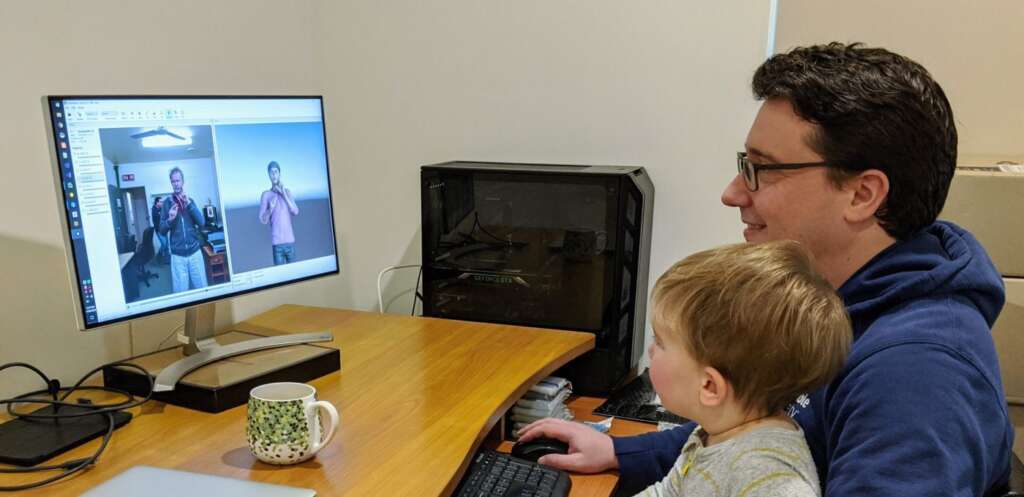
Sean Thurrowgood works on the chameleon software watched by his son
It’s clear as Rebecca talks how passionate she is about helping Deaf people gain entry to the body of Christ.
“My big passion is that the church would see deaf people as valued members of Christ. When I say that to Christian people, it’s like something turns on. They have that mind shift. It’s not that they’re not kind and loving; it’s just that they’ve never really seen it that way before.”
Rebecca says Deaf people do not lack gifts to participate in church, but some in the Deaf community are suspicious of the church because of being seen as people who need help.
“They want to be people who are part of the church, and they might see that Christ has a place for them in his body. They’re not just something that the body does something for, but they are an inclusive part of his body and are there for a reason. They have a purpose so that they can see that they’re valued as they are.”
Rebecca hopes that as well as translating Bible materials into Auslan, she might also be able to create access to courses such as Freedom in Christ or Alpha which are so easy for hearing people to access but closed to the Deaf community.
Email This Story
Why not send this to a friend?
